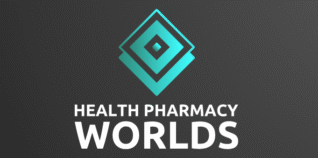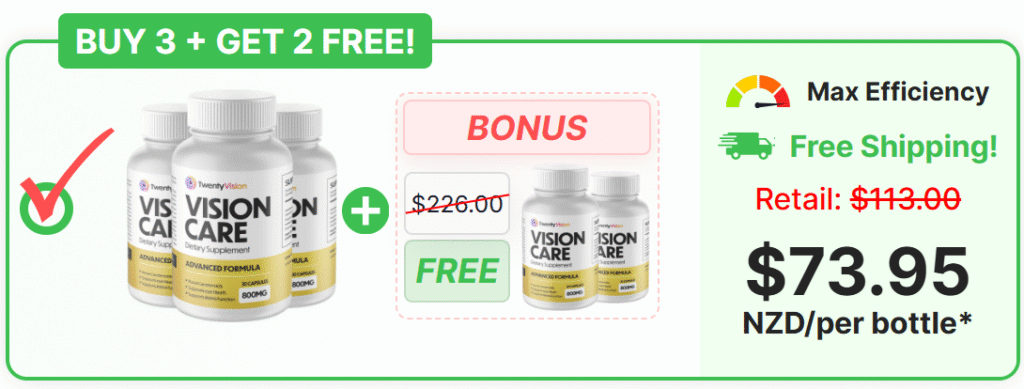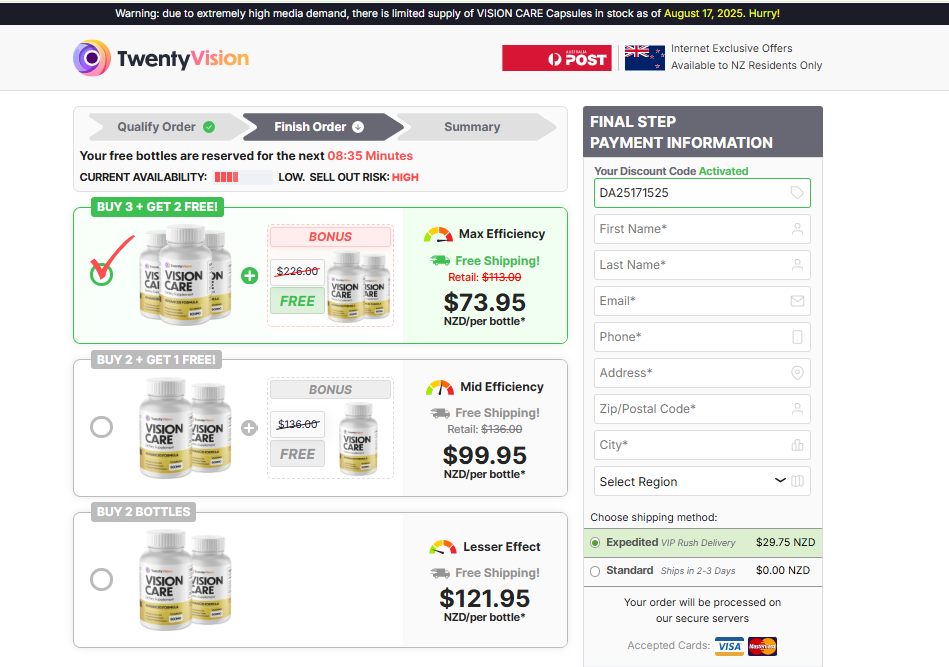Introduction
Our eyes are one of the most important sensory organs, allowing us to perceive and interact with the world. Despite this, vision care is often overlooked until problems arise. According to the World Health Organization (WHO), more than 2.2 billion people globally suffer from some form of vision impairment or blindness, with at least half of these cases being preventable. From everyday habits to professional treatments, taking care of your vision should be a lifelong commitment.
This article provides a detailed guide to vision care—covering common eye conditions, prevention strategies, nutrition, lifestyle adjustments, regular eye exams, and modern treatment options—helping you protect your eyesight and maintain optimal eye health.
👁️ Improve Your Eye Health Today – Click Here to Buy Vision Care New Zealand!
Why Vision Care Matters
The Role of Eyesight in Daily Life
Vision is the sense we rely on the most. It affects how we work, learn, drive, enjoy hobbies, and connect socially. Healthy eyes are essential for independence, productivity, and overall well-being. When vision deteriorates, even simple tasks—like reading, recognizing faces, or navigating safely—can become challenging.
The Economic and Emotional Impact
Poor vision not only reduces quality of life but also carries economic burdens. Eye diseases left untreated can lead to costly treatments, assistive devices, or even permanent disability. On the emotional side, vision impairment may increase risks of depression, social isolation, and loss of confidence.
Common Eye Problems
Understanding common vision issues is the first step toward prevention and management.
1. Refractive Errors
The most widespread vision problems, including:
-
Myopia (nearsightedness) – Clear vision up close, blurred vision at a distance.
-
Hyperopia (farsightedness) – Blurry vision up close, clear at a distance.
-
Astigmatism – Distorted or blurred vision at all distances due to irregular corneal shape.
-
Presbyopia – Age-related difficulty focusing on near objects.
These conditions are usually corrected with glasses, contact lenses, or refractive surgery.
2. Cataracts
A cataract is clouding of the eye’s natural lens, often related to aging. Symptoms include blurry vision, sensitivity to glare, and difficulty seeing at night. Surgery is a highly effective treatment.
3. Glaucoma
This disease damages the optic nerve due to increased eye pressure. It develops slowly and may cause irreversible vision loss if untreated. Regular eye exams are crucial because early glaucoma has no obvious symptoms.
4. Age-Related Macular Degeneration (AMD)
AMD affects the central part of the retina (macula), leading to loss of central vision. It’s a leading cause of blindness among people over 50.
5. Diabetic Retinopathy
Caused by damage to blood vessels in the retina due to diabetes. Early detection through regular screening can prevent severe vision loss.
6. Dry Eye Syndrome
Occurs when eyes don’t produce enough tears or when tears evaporate too quickly. Common symptoms include burning, itching, or a gritty feeling.
7. Eye Infections and Injuries
Bacterial, viral, or fungal infections, along with physical trauma, can lead to vision complications if not treated promptly.
🌟 Restore Clearer Vision Naturally – Click Here to Order Vision Care Now!
Daily Habits for Healthy Vision
Maintaining eye health goes beyond corrective lenses—it’s about everyday care.
1. Follow the 20-20-20 Rule
For people using digital devices, every 20 minutes, look at something 20 feet away for 20 seconds. This reduces digital eye strain.
2. Maintain Good Screen Habits
-
Adjust brightness and contrast.
-
Keep screens at least an arm’s length away.
-
Blink frequently to avoid dryness.
3. Practice Safe Contact Lens Use
-
Always wash hands before handling lenses.
-
Clean and store lenses properly.
-
Replace lenses as recommended.
4. Protect Eyes from UV Rays
UV radiation accelerates cataracts and AMD. Wear sunglasses that block 100% UVA and UVB rays.
5. Wear Protective Eyewear
Safety glasses or goggles should be worn during sports, construction work, or lab activities to prevent injuries.
6. Quit Smoking
Smoking increases the risk of cataracts, AMD, and optic nerve damage. Quitting significantly improves eye health.
7. Manage Lighting
Ensure adequate lighting when reading or working. Poor lighting strains the eyes unnecessarily.
🛒 Limited Stock Available – Click Here to Buy Vision Care in New Zealand!
Nutrition and Eye Health
Diet plays a crucial role in maintaining clear vision and reducing the risk of eye diseases.
Key Nutrients for Eye Health
-
Vitamin A – Essential for night vision and corneal health. Sources: carrots, sweet potatoes, spinach.
-
Vitamin C – Protects against cataracts. Sources: oranges, strawberries, bell peppers.
-
Vitamin E – An antioxidant that may slow AMD. Sources: almonds, sunflower seeds.
-
Omega-3 fatty acids – Reduce dry eye syndrome and support retinal health. Sources: salmon, chia seeds, walnuts.
-
Lutein and Zeaxanthin – Filter harmful blue light and protect the macula. Sources: kale, spinach, corn.
-
Zinc – Helps transport vitamin A to the retina. Sources: oysters, beef, pumpkin seeds.
Hydration Matters
Staying hydrated helps maintain adequate tear production, reducing dryness and irritation.
Eye Care for Children and Teenagers
Early Screening
Vision problems in children can affect learning and development. Pediatricians often screen for eye conditions at an early age.
Signs of Vision Problems in Kids
-
Squinting or tilting head
-
Frequent eye rubbing
-
Difficulty reading
-
Complaints of headaches
Digital Eye Strain in Teens
With increased screen time from online learning and gaming, teenagers are more prone to digital eye strain. Encouraging breaks, outdoor play, and limited screen exposure helps preserve their vision.
👓 Support Healthy Eyes & Sharp Vision – Click Here to Get Vision Care Today!
Vision Care for Adults and Seniors
Adults (20–40 years)
-
Protect eyes from workplace hazards.
-
Manage screen use.
-
Get a comprehensive eye exam every 2 years.
Middle Age (40–60 years)
-
Be aware of presbyopia and the need for reading glasses.
-
Monitor for signs of glaucoma, cataracts, and AMD.
-
Annual eye exams become more important.
Seniors (60+)
-
More frequent exams (at least once a year).
-
Monitor chronic diseases like diabetes and hypertension.
-
Stay vigilant for sudden vision changes, which require immediate attention.
Eye Exams and Professional Care
Why Regular Eye Exams Matter
Many eye conditions progress silently without symptoms until damage is advanced. Routine eye exams can catch these issues early.
What to Expect in an Eye Exam
-
Visual acuity test (reading letters on a chart).
-
Refraction test to determine prescription.
-
Slit-lamp examination for corneal and lens health.
-
Tonometry to measure eye pressure.
-
Retinal exam (funduscopy) to detect diseases like AMD and diabetic retinopathy.
🚚 Fast Delivery Across New Zealand – Click Here to Buy Vision Care Now!
Modern Vision Correction Options
Glasses
The most common and non-invasive method of correcting refractive errors. Available in different designs like bifocals, trifocals, and progressive lenses.
Contact Lenses
Offer a wider field of view than glasses. Available in daily, monthly, or extended wear types.
Refractive Surgery
-
LASIK – Reshapes the cornea to correct vision.
-
PRK – Similar to LASIK but removes corneal surface layer.
-
SMILE – A minimally invasive laser procedure.
Cataract Surgery
A highly effective outpatient procedure where the cloudy lens is replaced with an artificial intraocular lens.
Managing Chronic Diseases for Vision Care
Eye health is closely linked to overall health. Chronic conditions like diabetes, hypertension, and high cholesterol can damage the eyes if left uncontrolled.
-
Diabetes – Can cause diabetic retinopathy.
-
Hypertension – May lead to hypertensive retinopathy.
-
High cholesterol – Linked to retinal vein occlusion.
Regular monitoring, medication adherence, and healthy lifestyle choices help protect vision.
✅ Trusted Eye Health Formula – Click Here to Secure Your Vision Care Order!
Eye Health and Technology
Blue Light Concerns
Excessive screen exposure emits blue light, which can cause eye strain and possibly disrupt sleep. Blue light-blocking glasses or screen filters may help.
Telemedicine for Eye Care
Virtual consultations with ophthalmologists and optometrists are becoming more common, allowing early detection and advice without frequent clinic visits.
Myths and Misconceptions About Eye Care
-
Sitting close to the TV ruins eyesight – False; it may cause temporary strain but not permanent damage.
-
Wearing glasses weakens your eyes – False; glasses simply correct refractive errors.
-
Carrots are the only food for healthy eyes – False; while rich in vitamin A, a balanced diet is necessary.
-
Eye exercises improve vision permanently – No scientific evidence supports this for refractive errors.
Future of Vision Care
Technological innovations are rapidly transforming vision care.
-
Smart contact lenses that monitor glucose levels.
-
Stem cell therapies for retinal repair.
-
Gene therapy for inherited retinal diseases.
-
Artificial intelligence (AI) to detect eye diseases earlier and with greater accuracy.
✅ Trusted Eye Health Formula – Click Here to Secure Your Vision Care Order!
Conclusion
Vision care is not just about seeing clearly—it’s about protecting your independence, quality of life, and overall health. By adopting healthy habits, eating a nutrient-rich diet, wearing protective eyewear, and getting regular eye exams, you can safeguard your eyesight for years to come.
In today’s digital world, where screen time is unavoidable and lifestyle diseases are on the rise, prioritizing vision care is more critical than ever. Early prevention, awareness, and access to modern treatments ensure that millions of people can continue to see the beauty of the world clearly.


